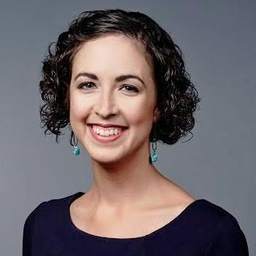As digital news continues to rapidly change, journalists often complain that there’s not enough time to stay on top of the latest trends, much less figure out standards and best practices for emerging technologies.
Victor Hernandez wants to fix that – starting with wearable technology.
Hernandez, who lives in San Diego, California, was recently named a 2015-2016 fellow at the University of Missouri’s Donald W. Reynolds Journalism Institute. During his eight-month fellowship, he will explore the impact of wearables – in particular, smartwatches – and their journalistic potential.
Hernandez was a casualty in the widespread Turner Broadcasting layoffs, which eliminated more than 300 CNN Worldwide employees in fall 2014. Although losing his job was unexpected, the news futurist says he’s optimistic about the opportunities ahead, including the RJI fellowship.
Throughout his fellowship, Hernandez will visit local and national newsrooms experimenting with wearable technology. At the end, he will publish a digital “wearables playbook,” which will include best practices, recommended equipment, approaches to workflow, and various case studies. Many of the recommendations will also appear on a Tumblr dedicated to the project.
“The goal is to publish something at the ground floor of the wearable revolution,” he explained.
Through his research, Hernandez also aims to deliver recommendations for the next version of the Apple Watch, such as adding a built-in camera or recording device. “[This project] is about engaging thought leaders in newsrooms about what revolutionary components they’re looking for. From there, we’ll open up a dialogue with Apple, as a community, about what we’d like to see with future releases.”
The timing of Hernandez’s project intentionally syncs up with the release of the Apple Watch. Hernandez predicts the product, which is currently only available to buy online, “is going to offer pretty basic functionality – nothing that your smartphone isn’t delivering.”
“But that doesn’t mean it doesn’t present itself as a game-changer,” he added. “We didn’t see the iPhone 1 as a way to transform journalism, but look at it today.”

Attendees get a sneak peek of the Apple Watch after a March 15 Apple event in San Francisco. (Photo by Eric Risberg/AP)
Helping journalists make sense of new technologies has long been a passion for Hernandez.
The technologist, who spent 12 years at CNN, described himself as a “TV analog thinker” in his early years at the cable network. “Things were very formulated and you followed the steps – you didn’t rethink processes,” he said. “By the mid-2000s, though, innovation started creeping into those processes, whether you liked it or not.”
Hernandez embraced that innovative thinking. He pushed for live-streaming capabilities for crews in the field and embraced social media as a way to discover news and information more quickly. “We were all learning at that point,” he said. “There were no tech experts.”
In 2009, he started a weekly in-house knowledge-sharing series called Tech Tuesdays. “We’d invite everyone and anyone interested [within CNN] to attend and learn about the latest innovations,” he said. The talks, which Hernandez hosted for five years, often attracted a standing-room-only audience.
“I enjoyed helping people engage with new technologies – legacy journalists or people who are skeptical or in denial – to touch the gadget, to give Twitter another try,” Hernandez said. “We don’t have enough arenas or opportunities [in news] to call time out and learn about new things. People wind up saying ‘I’m too busy, it’s too difficult.’”
The inspiration for Hernandez’ wearables research came from a project he “tried to get off the ground at CNN” incorporating Google Glass. (I also worked at CNN and was involved with the CNN iReport for Glass release.)
“It’s going to be so much easier to do this as a research project – there are no internal politics at play,” he said. “I can work with people at multiple news organizations now and can make this work for the greater good.”
The outcome of Glass – largely considered a failed experiment by Google – will inform this project, Hernandez said. “We have to come to this with a certain degree of skepticism,” he explained. “Are we saying the watch is the next big thing in two to three years? I’m not willing to go there yet.”
Regardless, Hernandez says he feels confident about the future of wearable technology. “Just look at the sheer magnitude of the market forecast,” he said. “Watches are going to be here for a while. This seems much stickier.”








Comments